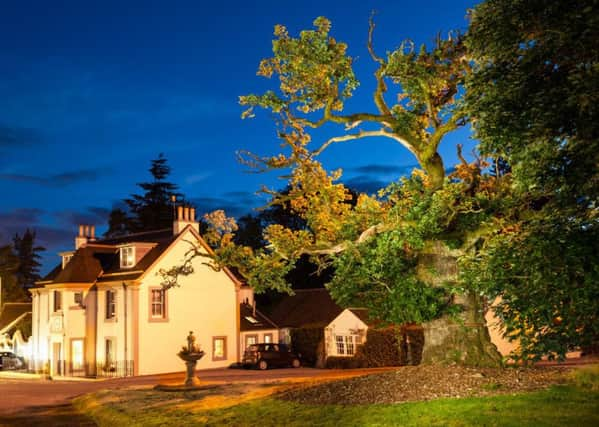Famous trees battle to become Scottish Tree of Year


Other contenders include a survivor of the ancient forest made famous by William Shakespeare in “The Scottish Play” and the oldest plant at the Royal Botanic Garden Edinburgh.
The winner will go forward alongside finalists from England, Wales and Northern Ireland to vie for the title of European Tree of the Year in 2016.
Advertisement
Hide AdAdvertisement
Hide AdThe competition attracts hundreds of thousands of votes from across Europe. Its aim is to identify trees as important natural and cultural heritage that deserve special protection from threats posed by climate change, development, pests and diseases.
Over 200 nominations for trees across the UK have been whittled down to six in both Scotland and Northern Ireland, 10 in England and seven in Wales.
Scottish trees include the Clachan Oak, where William Wallace is said to have rested and Rob Roy Macgregor is reputed to have hidden, a giant redwood thought to have been sent back as a seed by a Scotsman involved in the California Gold Rush and an oak though to be one of only two trees left from the Birnam Wood made famous in Macbeth.
England’s candidates include an ancient yew close that stands where King John signed the Magna Carta, a holy thorn linked to the legend of Joseph of Arimathea and an oak where the future Charles II hid during the Civil War.
In Wales, entrants include a yew thought by some to be at least 5,000 years old, a 1,000-year-old oak that has continued to grow after collapsing in a storm in 2010 and a yew with a massive 33ft girth.
Northern Ireland’s competitors include “the Dark Hedges”, an avenue of beech trees featured in the cult TV show Game of Thrones and two lime trees that have grown together to become a symbol of unity.
The current European Tree of the Year is an oak on a football field in Estonia. Last year’s Scottish winner, Lady’s Tree, the Perthshire Scots pine where the famous veteran osprey Lady of the Loch laid a record 71 eggs, came in ninth place.
Another Perthshire specimen, known as Neil Gow’s Oak or the Fiddle Tree for its links to the famous 18th-century Scottish musician, scooped seventh place in the 2014 contest.
The competition is being run by the Woodland Trust.
Advertisement
Hide AdAdvertisement
Hide AdCarol Evans, director of the Woodland Trust Scotland, said each finalist represents “a unique link to both cultural and natural heritage”.
She added: “They all have remarkable stories to tell and I’m sure that people will have a hard time choosing their favourite.”
The short list is as follows:
• Benmore’s Giant Redwood, Dunoon, Argyll and Bute - this avenue of giant redwoods, often considered to be the best entrance to a botanic garden in the world, is thought to have come from seeds sent back by the sons of Scottish landowner Patrick Matthew who were involved in the California Gold Rush.
• Bibby Tree, Edinburgh - this Sabal palm, endemic to Bermuda where they are under threat, is the historic centrepiece in the Tropical Palm House at the Royal Botanic Garden Edinburgh, where it is the oldest known plant in the collection.
• The Clachan Oak, Balfron, Stirling, a sessile oak which William Wallace is said to have rested against, and later Rob Roy Macgregor is supposed to have hidden here. It is held together by wide iron rings to which criminals were chained as punishment.
• Suffragette Oak, Glasgow - this oak in Kelvingrove Park was planted by suffrage organisations on 20 April 1918 to commemorate the granting of votes to women, and is a favourite spot on the Glasgow Women’s Library West End Women’s Walk.
• Poker Tree, Aberfoyle, Stirling - an iron poker embedded in the oak recalls a fight in 1690 when Bailie Nicol Jarvie travelled from Glasgow to visit his cousin Rob Roy, and stopped at the inn at Clachan of Aberfoyle where a drunken highlander challenged him to a fight. His sword was rusted shut, so he pulled a poker from the fire, set fire to the highlander’s plaid - and fled.
• Birnam Oak, Perthshire - this oak and a neighbouring sycamore are thought to be the sole survivors of an ancient forest that once straddled the banks and hillsides of the River Tay, celebrated in Shakespeare’s Macbeth as the famous Birnam Wood.